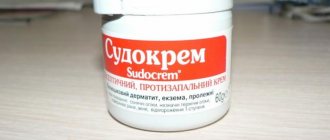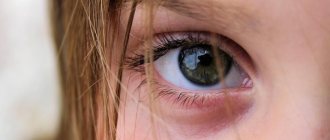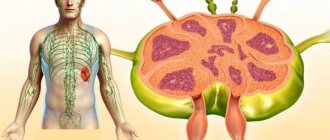The appearance of warts in a child means that a virus has entered his body. They appear as tumors on various parts of the body. Treatment of warts in children occurs after visiting a doctor. Children's warts are considered benign growths. They can appear on the arms, legs, face and body. Moreover, they can appear in several pieces. As papillomas grow, they change color, and after they are injured, blood may appear. Warts on the fingers or elbows spoil the appearance and disturb the child.
The danger is that an infection can enter the body through this wound. Most often, this problem appears in adolescence, but it can also occur in a newborn. Much depends on the child’s immunity and the possibility of infection during birth. The development of the virus in the body of a two-month-old child has a bad effect on the development of the newborn and can provoke various pathologies. How to treat warts in children? Warts on the hands of a small child; their causes and treatment can only be determined by a specialist.
Causes of warts on hands
Doctors associate the appearance of growths with the activation of the papilloma virus in the child’s body. It is transmitted from person to person, most often from mother to child.
Sometimes infection occurs after contact with other people's toys, office supplies, and personal hygiene items. A child can catch the virus at a party, kindergarten, or any other public institution.
When HPV enters the body, it takes a wait-and-see approach. It begins to actively reproduce only when exposed to certain triggers. It could be:
- Low immunity . A weakened child's body is easier for viruses to penetrate. Scientists have noticed that warts appear when a child goes to kindergarten. Any adaptation creates severe stress, which negatively affects the immune system.
- Prolonged contact with the pathogen . If a child’s surroundings include close relatives who are carriers of the virus, the likelihood of infection increases.
- Quality skin condition . Most often, a wart forms where a hangnail constantly comes off or there are microcracks. As a result of these injuries, a favorable environment for the reproduction of the virus is formed on the skin.
- Hypothermia of the skin in winter, prolonged games in the water, increased sweating of the hands.
- Natural hormonal surge . The body becomes vulnerable during puberty.
Neoplasms caused by the human papillomavirus quickly spread throughout the body. Therefore, it is so important to know why benign skin growths appear on the hands of children.
Possible routes of infection
The main ways of infection with the virus include:
- Contact-household – transmission of infection occurs through contact with household items that were previously used by the carrier of the virus. A child can also become infected during hugs and kisses.
- Self-infection occurs as a result of tearing off or scratching warty growths. The virus penetrates healthy tissues, damages them and provokes the development of new formations on the skin and mucous membranes.
- Vertical - occurs when a child passes through the birth canal and is considered a manifestation of a congenital rather than acquired infection.
Important!
With constant contact with infected people, children in good health have a great chance of avoiding infection.
Main types
Doctors know more than one type of wart. The reason is the existence of several types of papilloma viruses.
Vulgar growths
Most often they appear in children of preschool and school age. They can be recognized by their shape. They look like a spherical segment. The hemisphere rises above the surface of the epidermis. It has a flesh or yellow color with a grayish tint.
The longer the growth is present on the skin, the darker it becomes. Most often, the back of the hand gets dusted. First, single growths appear near the nail plates or on the sides of the fingers. This is the motherboard.
Subsequently, small nodes form around it. Sometimes they are compressed and combined into one neoplasm with a diameter of 1.5 centimeters. Vulgar warts have a rough surface and a dense structure.
Palmoplantar growths appear on the palms and fingertips. Doctors draw the attention of parents to their similarity to calluses. Dense growths grow deep into the skin and affect nerve endings. Therefore, children experience pain.
Juvenile warts
They grow on the back of the hands. They have clear boundaries, round shape, light brown or yellow color. The head of the growth is soft.
It rises above the dermis and resembles a pimple. Sometimes flat calluses cause subcutaneous itching. The appearance of a plantar wart is accompanied by the formation of a complex of aesthetic imperfections.
Varieties
New growths on the skin in children can be of various sizes, shapes and shades, which allows them to be divided into several categories:
- Ordinary - rather hard formations of brown, beige or gray color. Seals are formed in the form of a cluster of small growths around one large papilloma, but they are also found in a single copy.
- Plantar - differ from ordinary ones in their rough texture and large size, have a yellowish tint and often grow inside the skin, causing discomfort in the child while walking. The growths look like dry calluses, but due to the presence of dark inclusions in the structure, they are easy to recognize.
- Filiform - warts are oblong in shape, narrow at the base and widened at the apex. The formations are long, thin, easy to injure and notice on the skin. Color – flesh-colored, yellow or brown.
- Flat - appear in adolescents during a hormonal surge. The growths are small elevations of a pinkish hue, no more than 5 mm in size. Papillomas are arranged in a line and sometimes merge, forming a large compaction.
When to delete
If a wart appears on a child’s hand, the decision must be made based on an assessment of a number of factors. If the growths do not cause inconvenience and their integrity is not compromised, there is no need to worry.
Practice shows that the symptoms of the presence of the virus in a child’s body disappear on their own after 1.5-2 years. You need to see a doctor if:
- the growth begins to grow and increase in size;
- the wart changes color;
- new elements appear;
- several types of warts form on the hand at the same time;
- the nodular neoplasm is constantly injured and bleeds;
- the growth causes a clear cosmetic defect in location and size.
Treatment tactics should be developed only after a medical examination and certain diagnostic procedures.
Diagnosis of the disease
When visiting a dermatologist, it is necessary to tell about the presence of any concomitant diseases. If you have diabetes, bronchial asthma, or a hereditary predisposition to skin diseases, the specialist should know about this. After collecting anamnesis, an appointment for diagnostic tests is issued. Typically, the doctor refers the patient to the following diagnostic procedures:
- Blood test for antibodies to human papillomavirus.
- Analysis by polymerase chain reaction (PCR). This is how the causative agent of the disease is identified. It is important for the doctor to differentiate warts and exclude the possibility of the formation of molluscum contagiosum, lichen planus, or the development of warty tuberculosis.
- Histological examination of a piece of affected skin. The analysis allows us to exclude the possibility of growth of a malignant neoplasm.
Based on the results obtained, the doctor chooses the optimal treatment method.
Morphology of the pathogen
Human papillomavirus (HPV) is a double-stranded DNA virus that can cause hyperplastic, papillomatous, and verrucous squamous cell lesions in the skin and various mucous membranes.
HPV has more than 100 different genotypes, of which about 40 can be transmitted sexually. HPV-16 and HPV-18 are associated with 70% of squamous cell carcinomas and 86% of adenocarcinomas of the cervix.
These same genotypes are also implicated in cancers of the penis, anus, vulva and vagina, as well as squamous cell carcinomas of the conjunctiva, mouth, oropharynx, tonsils and larynx. Six HPV genotypes (HPV-31, 33, 35, 45, 52 and 58) are responsible for an additional 20% of cervical cancer cases worldwide.
HPV (human papillomavirus) can be divided into mucosal and cutaneous human papillomavirus types:
- The mucous types inhabit the mucous membranes and can cause cervical cancer in adults, as well as anogenital warts in children and adults.
- Cutaneous types inhabit some area of the squamous epithelium of the skin and produce plantar and flat warts, which usually appear on the hands, face and feet.
- Specific skin types are also found in epidermodysplasia verruciformis, which is a rare familial disorder associated with the development of large skin warts, progressing to skin cancer and whimsy syndrome (a rare combined immunodeficiency syndrome that is also characterized by warts).
How to remove warts from a child
There are several ways to treat such growths. These include:
- Medicines.
- Electrocoagulation.
- Cryodestruction.
- Hypnosuggestive therapy.
- Folk remedies.
If you increase the child’s immunity, warts on the surface of the hand and fingers can disappear on their own approximately 1.5 years after formation. The growths are contagious, but doctors tend to refuse intensive treatment. Drug therapy is used in the following cases:
- neoplasms become painful;
- their presence brings physical and psychological discomfort;
- the number of growths increases sharply;
- warts change color.
Drug therapy
There are several medications that are prescribed to remove warts.
Ointments (“Oxolinic”, “Tebrofenovaya” or “Fluorouracil”) act most sparingly. During treatment, the growths are treated for 2 weeks, after which they turn black and fall off. Before use, it is advisable to test the skin reaction. The use of ointments is justified in the treatment of warts on the hands of a very young child.
Cauterizing solutions are prescribed to children from 5 years of age (Solcoderm, Duofilm, Superchistotel). They must be applied to the affected areas according to the instructions for 5 days. Ointment with celandine treats warts quickly and effectively, but due to its aggressive formula it is not used for treating the skin of children.
Patches (“Salipod”, “Salicylic”) provide a continuous supply of active substances to the wart. This increases the effectiveness of the active substance. The means are used as follows: a piece is cut out of the plate, the size of which coincides with the area of the neoplasm.
It is glued over the growth and additionally fixed with a bactericidal plaster. Duration of action – 12 hours. Then you should remove the old patch and repeat the procedure. The course of treatment is 2 weeks.
Electrocoagulation
Electrocoagulation allows you to remove warts using high-frequency current. Its effect cauterizes tissues that are affected by the virus.
During the procedure, the blood vessels are sealed, so the risk of bleeding is eliminated. After the procedure, a crust forms on the skin, under which the injured area heals.
Attention! This hardware technique is not the most advanced way to remove warts. Today such operations are carried out using laser destruction. It does not require prior anesthesia. Usually one procedure is enough to completely remove the wart. Complete healing and restoration of the skin occurs after 2 weeks.
Cryodestruction
The use of liquid nitrogen is another advanced treatment method. It is based on the method of exposure to low temperatures. To remove one wart, 2 sessions will be required. They can be carried out at home using the Kryofarm installation.
Hypnosuggestive therapy
Today, hypnosis is actively used in the treatment of many childhood diseases. It can be used when the child is 8 years old. A prerequisite is the absence of a history of organic changes in the nervous system and bone skeleton.
With the help of hypnosuggestive therapy, external stimuli are eliminated, a “guard point” is formed, which turns on the body’s defenses and allows you to cope with the task.
Modes of transmission of human papillomavirus in children
Several potential routes of transmission may characterize pediatric HPV infections, including perinatal transmission, trauma, sexual abuse, and possibly indirect transmission. Infections such as HPV that cause skin warts, in most cases, are acquired through microtrauma.
Transmission of infection occurs either directly from one person to another, or indirectly through contaminated objects or surfaces.
Auto-infection (scratches) from one body area to another is also possible. HPV is often detected when the mucous membranes of the oral cavity are affected. HPV is described as the most common STI (sexually transmitted infection), but, in contrast to clear evidence of sexual transmission of genital warts in adults and sexually active adolescents, it is extremely rare in children. Condylomas have been reported in 1-2% of abused children and in 50% to 75% of cases of genital warts in children.
Traditional methods of treatment
You can fight isolated warts using folk methods. However, it should be borne in mind that their effectiveness is lower. To achieve a significant effect, the duration of treatment will have to be increased. The following are used as folk remedies:
- Celandine juice . Using a pipette, the growth is generously watered with healing liquid 2 times a day. The course of treatment is 3 weeks.
- Compresses made from aloe and Kalanchoe leaves. The raw materials are crushed in a blender. The resulting paste is laid out on cellophane, a compress is applied to the affected area and secured with a bandage. Pre-steaming the wart in soda water enhances the effect of the compress. Duration – 3 weeks.
Compresses are made from raw grated potatoes and garlic in the same way. When preparing the composition, it is important to grate the ingredients separately. Bandages are applied overnight.
Prevention
Parents often ask whether it is possible to prevent warts from appearing on their children's hands. From the article it becomes clear that there is a set of preventive measures that reduce the activity of the papilloma virus to zero. Knowing the causes of infection, you need from an early age:
- instill hygiene skills;
- wean off the habit of biting your nails and picking off hangnails;
- carry out activities aimed at strengthening the immune system. Hardening, walking in the fresh air, and taking multivitamins are suitable.
Remember, warts are contagious. If a disease is detected, you should immediately contact a dermatologist.










